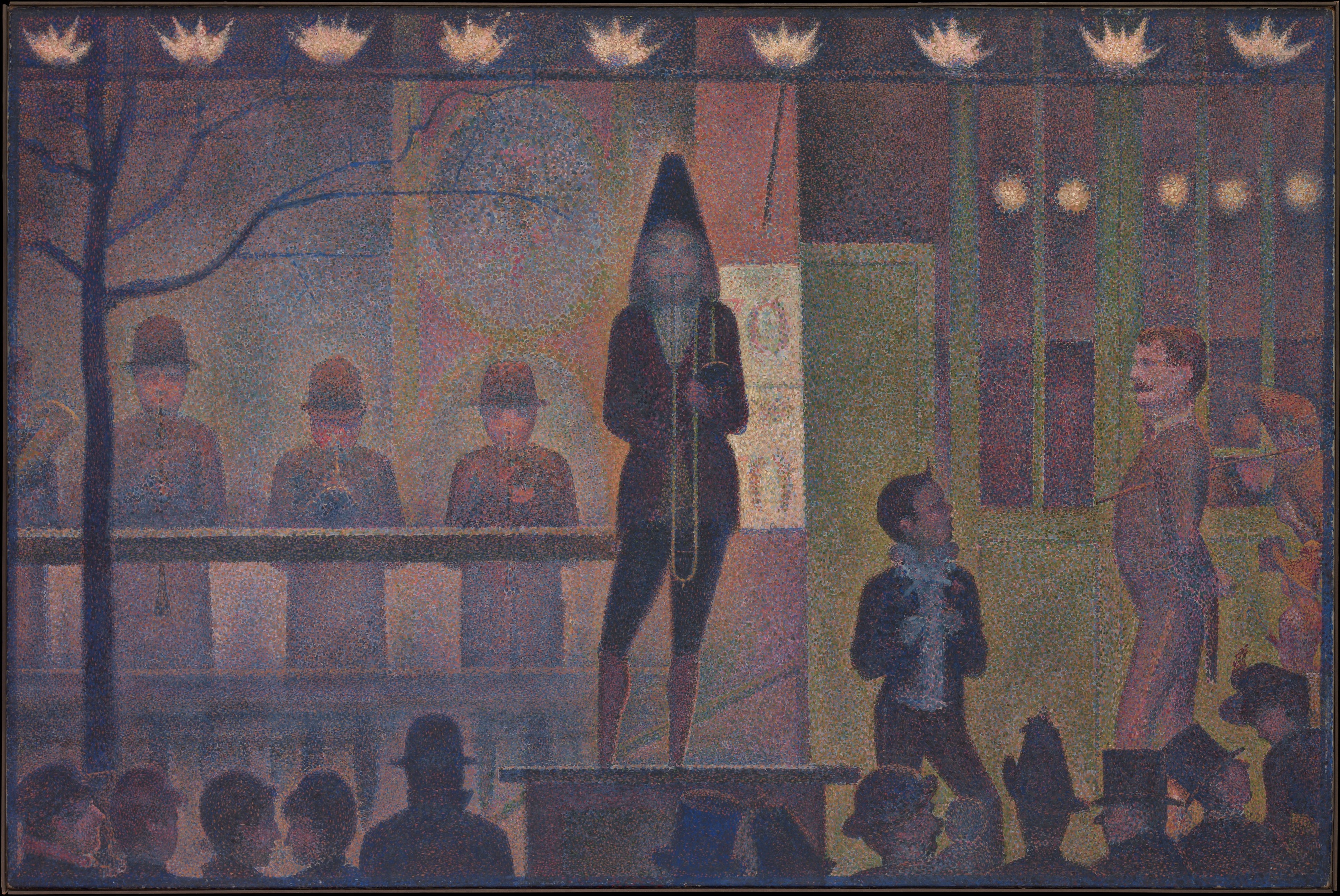Parade de Cirque
12:50 PM
 |
| Georges Seurat, Parade de Cirque, 1887-88 |
Seurat’s Parade de Cirque (1888) is the third to last canvas in his short career. Inspired by sketches he made when visiting Fernand Corvi’s traveling circus in the spring of 1887, Parade de Cirque stunningly depicts a circus tableau at night.
Seurat uses pointillism as a way to cast a thin mist over the scene, giving it a show like, perhaps sleazy, quality. Under the glow of the stage gaslights, a performance unfolds. In his first nocturnal painting, Seurat does a fantastic job using light, or the lack thereof, to his advantage. The facial details of the stage performers are indistinguishable in the light of dusk. The highlighted characters are the spectators, each with a gentle angelic glow around their heads. The hats of the audience give the foreground a buoyant feel, the eye bopping along from one bowler hat to the next. A parallel effect is exhibited by the gaslights above, light exploding in small, powerful bursts. This joyful feeling in the top and bottom of the composition is balanced by the somber and faded colors of the center backdrop.
The painting itself appears to have been stolen from an actual circus, the colors and texture mirroring a late nineteenth century canvas circus advertisement. Seurat’s Parade de Cirque is the first of his series on scenes of popular entertainment. Each painting in the series feels vibrant and alive as each character feeds off the energy of his surroundings. In this sense, Parade de Cirque ultimately allowed Seurat to solidify the technique of capturing of live entertainment and led to the magnificent Le Chahut of 1890.
0 comments